 Originally published January 28, 1994, in Comics Buyer’s Guide #1054
Originally published January 28, 1994, in Comics Buyer’s Guide #1054
Many moons ago, the folks at Warners Animation decided that they were going to produce a straight-to-video movie version of the popular Batman: The Animated Series. And then, somewhere along the way, they must have figured: What the hëll. Let’s put a few bucks into it and release it theatrically.
Thus we have Batman: Mask of the Phantasm, a sort of mixed breed, mixed bag of a film.
Since it wasn’t originally intended for big screen, the money apparently wasn’t there from the outset to provide the sort of animation that would really have made it sing. However there are a few moments in the film—particularly the 3D-like opening shot of Gotham—that are so striking, they wind up having a tacked-on feeling. As if someone said, “Well, if we are going theatrical, we’d better stick something in to make it look more impressive than afternoon animated fare.”
Still, one feels almost cretinous leveling complaints towards any Batman endeavor with genuinely serious intentions. After all, it seems only yesterday that every comic fan was bracing himself for another orgy of Bat-camp with the announcement of a Batman movie featuring a director and star best known for Pee Wee’s Big Adventure and Beetlejuice, respectively.
And Batman’s previous animated incarnation was flat, lifeless Saturday morning stuff, voiced by—if I recall correctly—Adam West.
What we have, then, in Phantasm, is something that once upon a time would have seemed beyond imagining, and beyond hope: a serious, reasonable animated Batman adventure. So I suppose we’re spoiled. If something is garbage, then we know it’s garbage and ignore it, hoping it’ll go away. But when something strives to be really fabulous—and even attains that goal from time to time—then it becomes that much more upsetting in those places where it falls short.
The story: In a plot apparently influenced by the Year One and Year Two Batman limited series, a caped villain called Phantasm has hit Gotham and is knocking off criminal types. As always seems to happen in cases like this, the blame for said murders is promptly pinned on Batman (Kevin Conroy, accidentally referred to in this column as Kevin Conway some weeks back).
Considering how frequently Batman takes the fall for these kinds of things, it’s amazing that every criminal in Gotham City isn’t sporting a cape and cowl by this time.
Although Commissioner Gordon remains steadfast, no one else in the city seems to care that Batman’s never done anything like this before, or seems aware of just how easy such a frame would be to set up. Then again, maybe they just don’t like the guy and are looking for an excuse to nail him.
While Batman deals with this assault on a professional front, his personal life takes a direct hit when the former love of his life, Andrea Beaumont (named after voice director Andrea Romano, mostly because Kevin Conroy had a habit of vocally caressing her name in between takes during recording sessions) returns to Gotham.
The story of their past relationship (in which we learn that Andrea is the woman who almost diverted Bruce Wayne from his destiny of vengeance) unfolds in a series of lengthy flashbacks: a fairly gutsy move for a film nominally aimed at younger viewers, many of whom find simple linear storytelling to be a challenge. Indeed, two-and-a-half-year-old Ariel was prone to demanding the whereabouts of “Matman” during the flashbacks.
It pays off, however, for the film’s emotional underpinning, and most of the strongest moments, are in the backstory.
Indeed, one of the flashback sequences which depicts a torn Bruce Wayne at his parents’ graveside, begging for release from the emotional crippling that their death caused (“I didn’t count on being happy!” he wails to the tombstone) is easily the most gut-wrenching moment in Batman’s cinematic life.
Another sequence details Bruce’s first foray into crime fighting, clad in black and taking on four warehouse-robbing goons. Just when he thinks he’s triumphed, a fifth goon with a machine gun pops out of a truck and opens fire. Even Ariel understood the jeopardy: The moment the fifth guy showed up and began shooting at our hero, Ariel declared, “Oh fug!” and continued to proclaim “Fug fug fug!“, not quite having gotten the hang of words ending in “k” yet. (To accusing looks, I pointed out defensively that at least the child was using it in the proper context.)
We see a younger Alfred as well, clucking and even indulgent over Master Bruce’s “plan.” (Upon Bruce’s discovery of the bat-filled cave under the manor, one almost expects him to snap his fingers and say, “That’s it! Of course! I shall become… a cave! I’ll be Caveman!”)
And as emotionally wrenching as the aforementioned graveyard scene is, likewise you find yourself chilled with Alfred’s reaction upon the first time Bruce dons his batgarb. In a way that Michael Keaton never managed (and Adam West never attempted) you get a true feeling for the tragedy that enveloped this young man’s life, and the awesome power that his parents extend even beyond the grave, all summarized by Alfred’s stunned and whispered “My God.” (“Oh, fug” might also have been appropriate.)
Due to the power of the backstory (Dana Delany as Andrea is particularly effective; with a character as thinly delineated as she is—aside from sharing Bruce’s penchant for chatting with corpses, we never really have any idea what distinguishes her from the dozens of other young socialites Bruce encountered—Delany gives us someone whose voice alone we could fall in love with) the shortcomings of the main plot become that much more sharply drawn.
Batman hustles around the city, trying to track down the Phantasm while, at the same time, avoiding the cops. Rarely have we seen Batman so close to the end of his batrope, at one point hightailing down an alleyway, without his car, without his mask, and a ton of cops at his heels. Meantime, the Phantasm’s next likely target, Sal Valestra (Abe Vigoda)—thinking that it is, indeed, Batman who is out to get him—seeks to hire Batman’s arch enemy, the Joker (Mark Hamill) to protect him.
This is, of course, a loser move. The Joker, of all people? I could see hiring the Penguin to nail Batman, or Two-Face, or Poison Ivy. The Joker, on the other hand, is the most likely to turn on his employer. It’s like hiring Lorena Bobbitt to work a bris.
However, we should be happy; unencumbered by the strictures of the Fox network’s standards and practices office, this Joker is even more dangerous than the TV version. The Joker (and, likewise, the Phantasm) is lethal. And, sure, the Joker’s presence doesn’t make much story sense. But hearing Hamill’s high-decibel laughter cackling through the theater is enough to jolt any youngsters who might have dozed through that mushy romantic stuff.
Unfortunately, story sense is where Mask of the Phantasm takes its greatest lumps. It is truly ironic that, whereas the animated Batman is freed from the live-action shackles of a clunky suit and herky-jerky fight scenes, the film shares the same story deficiencies that burden the Burton efforts.
Here we have Batman, the world’s greatest detective. Ultimately, though, he solves nothing. He never really manages to stop the Phantasm, or the Joker, or even come close to doing so. He remains one step ahead of the cops (barely) and two steps behind the villains (constantly). Every key plot decision is taken out of his hands, starting with the flashbacks (he doesn’t give up Andrea to become Batman; she dumps him and spurs it on) through to the conclusion of the Batman/Phantasm/Joker storyline as Batman stands there, watches it unfold, and ultimately doesn’t do anything to bring about a resolution.
Considering how well the daily afternoon series hangs together, it is amazing that a story couldn’t be crafted for the film that makes Batman more of a participant. Sure, there have been animated episodes where Batman is merely a supporting character, or even almost non-existent (“Harley and Ivy” comes to mind.) Even in those, however, Batman figures into the conclusion somehow.
Even more bizarrely, Phantasm has the same gaping plot hole at its conclusion that Batman Returns had. Specifically, the film ends with the bat signal being shined against the clouds, but Batman is still wanted by the cops. Boy, I bet that’s a signal he’ll answer double quick, huh? (“What is it, Commissioner?” “Batman, you’re under arrest.” “Oh, dámņ. Forgot about that.”) It wouldn’t have been quite so bad if the Batman-chased-by-police stuff hadn’t been the film’s centerpiece action sequence. But it was, and the failure to resolve it is that much more noticeable.
Add to that the inconsistent animation. Some moments are edge-of-the-seat gripping, but others scream of cut-rate budgets. Particularly awful, for example, is a sequence at a party where party-goers are painted right into the background. It saves money on having to animate them. Swell. But watching an extended sequence where some guy in the background has one arm raised and his mouth open—and doesn’t budge the whole time—is like watching a soiree at a mannequin convention.
Ultimately, then, is it worth going to see? Depends. Based purely on the merits of the film and story, you can easily wait for it to come to video. That was its original intended venue anyway, and on the small screen many of the animation deficiencies won’t be as screamingly evident.
On the other hand, it’s certainly entertaining enough, as long as your child is old enough to understand the concept of flashbacks and won’t whine at you, “Where’s Batman?” every five minutes.
And should comic fans see it? Absolutely. Why? Because perhaps a successful box office performance might send a message to Warners that the support for such endeavors is there, and they might consider putting some more money into any future ventures. That way the grade of animation might be higher—and maybe they can even afford an ending that works.
(Peter David, writer of stuff, gives a belated “Most” award to all the Diamond retailers who attended Diamond’s 10th Annual conclave: The Most Full Of It Award. During the DC presentation, Image publisher Tony Lobito was introduced, and received a chorus of boos. He then announced the Batman/Spawn team-up—and was greeted with resounding and stony silence. And I leaned over to my guest and murmured, “Watch. They sit on their hands now, but I guarantee you when the thing’s solicited, they’ll order it through the roof. Top 5, if not Number One.” So now the solicits are out, with the project on both the front and back cover of Previews, and we will be most interested to see the outcome.)
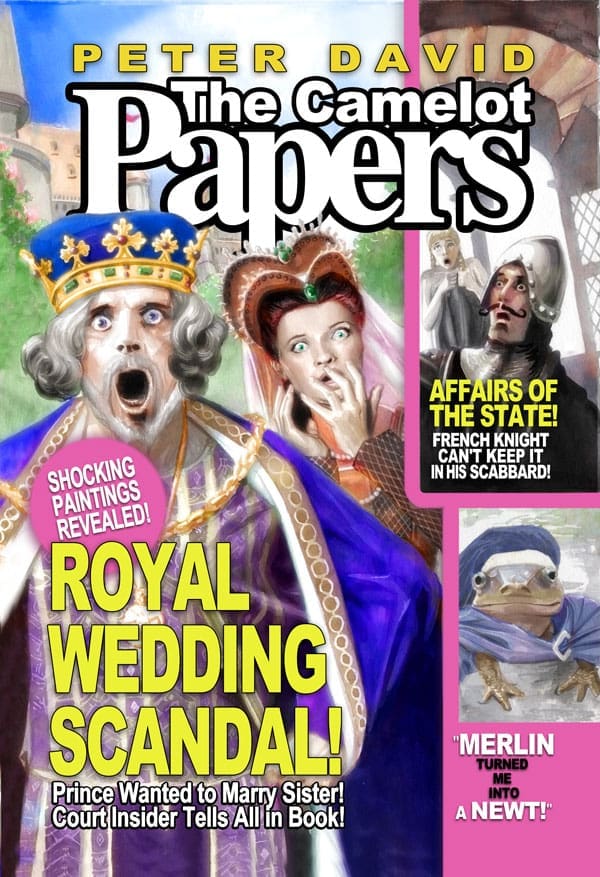
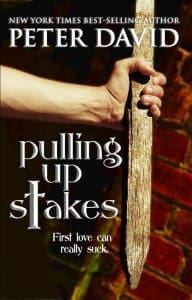
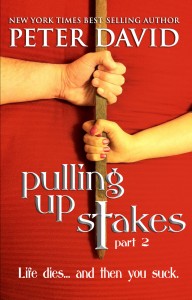
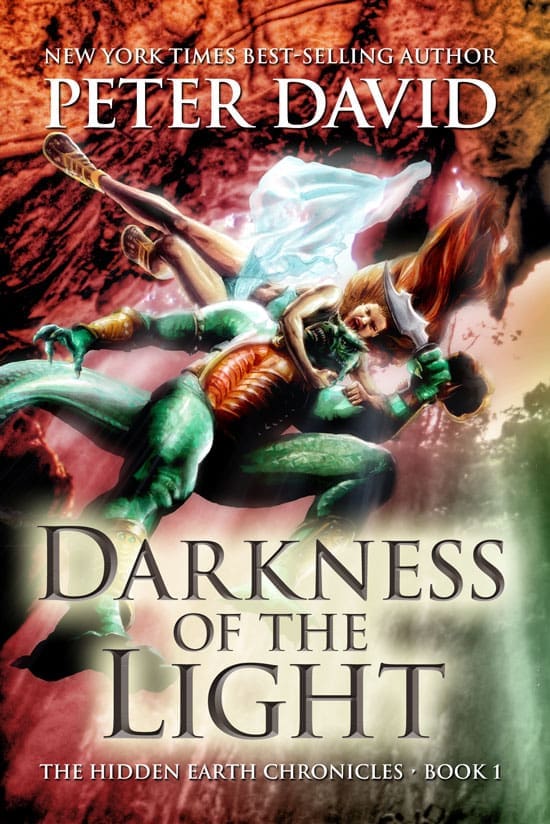
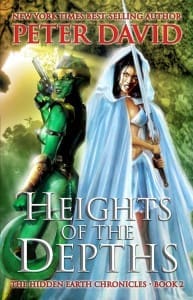
Valestra calling upon the Joker makes much more sense once it is made clear that this Joker was originally a gunsel who worked for Sal (and Valestra obviously knows it).
This got duplicated in another post. Sorry. This one posted so late that I thought that it was rejected.
PAD, the moment where Alfred first sees Bruce in the cape and cowl remains to this day one of my top three Batman moments. The silhouette of Bruce looking at the mask, head hanging down then putting on the mask exemplifies that moment where there is no turning back.
Along with that is Andrea’s reply to Bruce asking “What will vengeance solve?” While there is a bit of naivete in BATMAN of all people asking that question, it’s still a powerful retort.
I remember that “What will vengeance solve?” line and thinking, “Batman of all people…” “What will *murder* solve” would have been a more appropriate line. (But then Andrea couldn’t have given the same answer.)
What’s really funny is that MASK has the same basic plot as BATMAN BEGINS. And I honestly think that, flaws and all, MASK is the better movie. Not that BB is bad at all, but that MASK did the story better.
http://www.sff.net/people/krad/batsbegins.htm
I would agree with that. I like both movies, but B:MotP struck more of an emotional choird with me, since everyone in the final fight sequence has an investment in what happens beyond just good guys vs bad guys. And I love the differences between the fairground in the flashback and its more run down state in the present.
I liked both movies, but I don’t remember Bruce being tempted to give up being Batman as much as he was in MOTP. I was impressed at how much they managed to cram into Batman Beings: two villains (with one working for the other, as it always should have been), a full origin story, a woman who *wasn’t* just a damsel in distress, the point that one crime boss made that even with his parents killed Bruce still had an easy life, a Bruce Wayne that studied crime from the criminal’s point of view, and my favorite part, the emphasis on Batman as a team effort rather than one man that can do it all. I still missed the “Dark Knight *Detective*” part of it, but they showed how difficult it was just to train to be a great fighter. (and I really, really, wanted to hear Ra’s Al Ghul refer to Batman as “Detective” just once, it would have been a perfect moment right at Wayne Manor when Bruce figured out Ra’s identity.)
.
The best parts of MOTP (for me anyway) were in the flashbacks, and the intensity of the joker. To each their own, but I wouldn’t say that they had the same plot. MOTP’s Batman had to face someone else with a revenge fixation that was worse than his. BB’s didn’t. (Granted, both faced fanatics, but one wated to destroy Gotham City, the other just bumped off mob bosses.)
Keith wrote, “What’s really funny is that MASK has the same basic plot as BATMAN BEGINS.” Sorry, but I have to disagree with that statement. Both involve formative events in Bruce Wayne’s transformation into Batman, but the basic plot of MASK OF THE PHANTASM is that a new vigilante is targeting criminals for execution and the Batman is being blamed for the killings. The basic plot of BATMAN BEGINS is that a megalomaniac plans to destroy Gotham City as the beginning of a plan to purge the world of most of Man’s evil.
.
I still think that this was Batman’s greatest animated effort of all time. And as a movie it wins hands down as better than every live action Batman in between Batman and Batman Begins.
For me, it’s a toss-up between Phantasm and Sub-Zero. Sub-Zero is so tragic that it hurts.
Up until “The Dark Knight,” this was my favorite Batman movie. I found the backstory of Bruce more emotionally effective than “Batman Begins” (like PAD said, the graveyard scene is when the movie really hits) and Andrea made a more plausible love than Rachel Dawes.
I love “Batman: The Animated Series” so much that it spoiled me for any other animated Batman show. I never watched any of the others that came later.
.
I do think B:TAS was the better balance ever made of an animated superhero show between a superhero comic’s more adult sensibilities and what can be safely presented to kids.
.
I really have to complete my DVD collection. I have most of them, except for the last boxed set and a few specials like Mask of the Phantasm.
Peter can you do to Mask of the Phantasm what the Phantom(Fandom?) edit did to Star Wars: the Phantom Menace?
Heh. What i loved about the film (which i saw only on video) was the fanboy-bait inherent in the fact that the plot so resembles the YEAR ONE/TWO stuff – it faked me out on the villain’s ID…
Loved Mask of the Phantasm. At the time that it came out, it seemed truer to the series than any of the movies that had come before it. And Hammil’s Joker was definitely the best part. I especially loved the double meaning in his line to Vigoda. “Unhand me, old man! I don’t know where you’ve been!” Heh-heh.
First things first, I really enjoyed this movie. That said, though, I think that it felt like there were large parts missing. The set-up was well done, but the end got there a little too quickly.
My favorite moment in that movie is when Bruce dons the cowl for the very first time, and you see Alfred’s reaction. Priceless.
The introduction of the Joker isn’t nearly so random when you realize that, in this continuity, he was originally one of Valestra’s men (in fact, the nameless gunsel who took out Andrea’s father). Sal Valestra seems to be well aware of the Joker’s real identity (which is probably one of the reasons why the Clown Prince of Crime offs him).
The film does still suffer a little from a weak resolution and from the limited animation. I would love to be able to see what the movie would have looked like if the decision to make it a theatrical release had been made from the beginning of the project.
Peter… “fug”?!?
I remember this movie being overly long, with some good moments (esp. Joker’s, er, musical commentary when he first appears) but overall pretty weak.
My favorite animated Batman movie (the TV series in a class by itself) is BATMAN/SUPERMAN. This one has Batman fully intelligent and skilled, one of the most unique romantic triangles in comic book history, and Harley and Mercy slugging it out. (As a New Yorker, it is a little unnerving after 9/11 to see the villain flying around and blasting skyscrapers with missiles.)
Just to follow up on my closing note about the Batman/Spawn crossover and the hypocrisy of the scowling, booing retailers, I checked with John Jackson Miller who brought this summary of his to my attention:
.
March 1994’s top seller was another Batman team-up — this one Spawn/Batman, the Image-published cross-over by Frank Miller and Todd McFarlane. It was the consensus leader at both Diamond and Capital City Distribution. Capital City alone sold 141,550 copies, and total sales were likely in the 400-500,000 copy range. Notably, the issue cost $3.95 — the same as the top seller in March 2009!
.
There were two Batman/Spawn books and they were number one and number two of that month. That probably salved Lobito’s wounded ego.
.
PAD
In my longboxes I have a half-dozen copies of Image’s Spawn/Batman. And I only bought one of them. I didn’t like it as much as DC’s Batman/Spawn, though.
My comics dealer at the time took to sticking things like Spawn/Batman, Adventures of Superman #500, and the debut issues of the Supermen into comics bags in late-94/early-95, just to get rid of them.
I dunno, I’d say they were both number two.
On the main subject, I re-watched “Phantasm” a while ago, and for me, it was really jarring hearing Dana Delaney voice Andrea, after she’d taken up space in my brain as the “official” voice of Lois Lane.
I thought it was a shame that Batman Beyond: Return of the Joker was not released theatrically. Now that film had the budget and looked stunning. Bruce Timm even said it was the best thing they ever did (granted, this was pre-Justice League).
Still my favorite theatrical Batman movie.